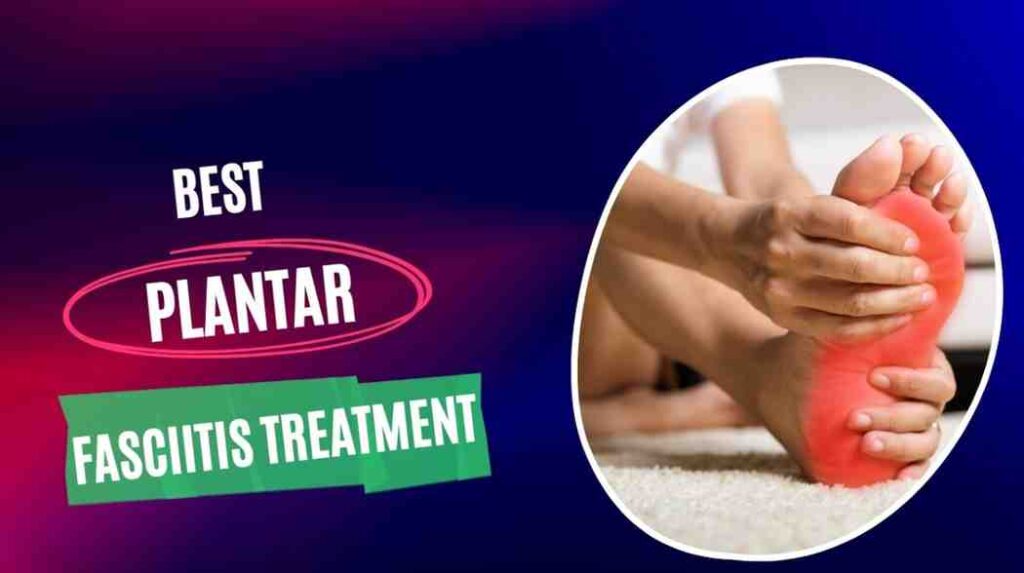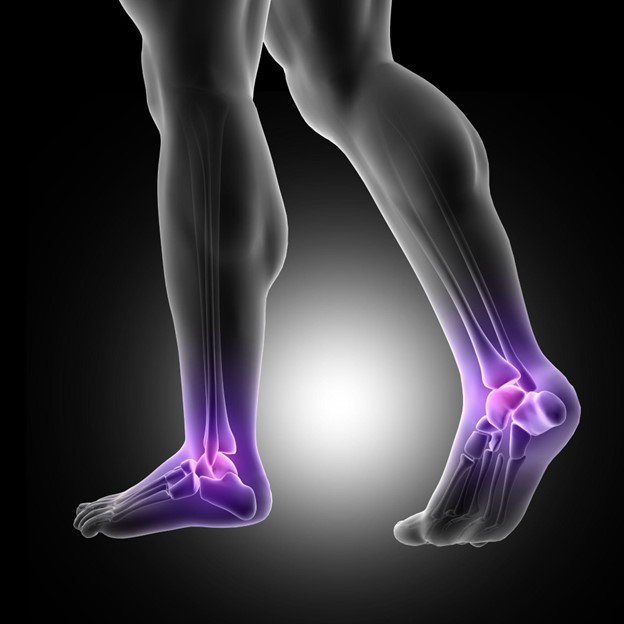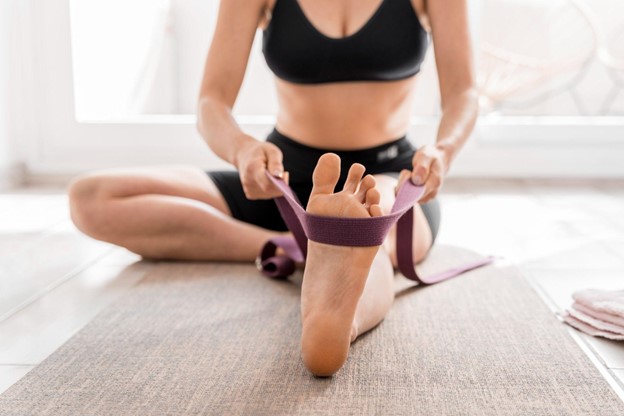Last updated on May 20th, 2025 at 11:58 am

Plantar fasciitis, a prevalent foot ailment characterized by heel pain and inflammation, demands a multifaceted approach to treatment. Initial measures often involve rest, ice application, and the integration of stretching exercises to alleviate tension in the plantar fascia. Suitable footwear with proper arch support and cushioning are crucial in minimizing strain, while night splints can aid in preventing the tightening of the fascia during sleep.
For more advanced cases, professional interventions like physical therapy, orthotics, and corticosteroid injections may be recommended. Shockwave therapy, a non-invasive procedure, has also shown promise in stimulating healing. Adopting preventive measures such as gradual exercise progression, maintaining a healthy weight, and proper warm-up routines can further contribute to long-term relief from plantar fasciitis. Seeking advice from healthcare professionals ensures a tailored treatment plan, facilitating a more effective and sustainable recovery.
Plantar Fasciitis Treatment
Before delving into treatment options, it’s essential to understand what plantar fasciitis is and how it develops. The plantar fascia is a thick band of tissue that connects the heel bone to the toes, providing support to the arch of the foot.
When this tissue becomes strained or inflamed, it leads to plantar fasciitis. Common causes include overuse, improper footwear, high-impact activities, and underlying foot conditions.

Best Exercises for Plantar Fasciitis Treatment
The best exercises for plantar fasciitis treatment are mentioned below:
Calf Stretches
- Stand facing a wall with hands placed on it.
- Extend one leg straight back while keeping the heel on the ground.
- Bend the front knee, feeling a stretch in the calf of the extended leg.
- Hold for 15-30 seconds and switch legs.
Towel Stretch
- Sit on the floor with your legs extended.
- Loop a towel around the ball of one foot.
- Gently pull the towel towards you, keeping the knee straight.
- Hold for 15-30 seconds and repeat on the other foot.
Toe Scrunches
- Sit comfortably and place a small towel on the floor in front of you.
- Use your toes to scrunch the towel towards you.
- Repeat for 2-3 sets of 15 repetitions.
Rolling Massage
- Freeze a water bottle or a golf ball.
- While seated, roll the frozen object under the arch of your foot for 5-10 minutes.
- This helps reduce inflammation and soothes the affected area.

Plantar Fasciitis Home Treatment
The best home remedies for the plantar fasciitis treatment are mentioned below:
Proper Footwear
- Choose your shoes which has good arch support and cushioning.
- Avoid high-heeled footwear and shoes lacking proper support to safeguard your feet.
Icing
- Apply an ice pack to the impacted region for a duration of 15-20 minutes at intervals of 2-3 hours.
- Icing helps reduce inflammation and provides relief.
Rest and Elevation
- Rest your feet, especially after activities that exacerbate the pain.
- Elevate your feet when possible to minimize swelling.
Night Splints
- Wear night splints to keep the foot in a dorsiflexed position while sleeping.
- This helps stretch the plantar fascia during the night.
Over-the-Counter Supports
- Consider using arch supports or orthotic insoles to provide additional support to the foot.
Other Approaches
- Footwear: Wear supportive shoes with proper arch support and cushioning to minimize strain on the plantar fascia.
- Night Splints: Night splints can be worn to keep the foot flexed, preventing the plantar fascia from tightening during sleep.
Professional Interventions
- Physical Therapy: A physical therapist can guide you through targeted exercises to strengthen the muscles supporting the foot and improve flexibility.
- Orthotics: Custom-made or over-the-counter orthotic insoles can provide additional support and help distribute pressure evenly across the foot.
- Medications: Nonsteroidal anti-inflammatory drugs (NSAIDs) may be recommended by a healthcare professional to alleviate pain and reduce inflammation.
- Corticosteroid Injections: In severe cases, corticosteroid injections may be administered to reduce inflammation and provide short-term relief.
- Shockwave Therapy: This non-invasive treatment involves using shockwaves to stimulate healing and reduce pain in the affected area.
Preventive Measures for Plantar Fasciitis
- Proper Warm-up: Always warm up before engaging in physical activities, especially high-impact exercises.
- Gradual Progression: If starting a new exercise routine, progress gradually to avoid overloading the plantar fascia.
- Maintain a Healthy Weight: Excess weight puts additional strain on the feet, contributing to plantar fasciitis.
Consult a Doctor and Medkart will help you Order Medicines Online
Conclusion
In conclusion, plantar fasciitis can be a painful and debilitating condition, but with the right approach, many individuals can find relief through plantar fasciitis treatment exercises and home remedies. Incorporating these exercises into your routine and adopting healthy habits can contribute to the long-term well-being of your feet. If in doubt, always consult with a healthcare professional for personalized advice and treatment.
Read: What are Generic Medicines?
FAQs on Plantar Fasciitis Treatment
Q1. What is Plantar Fasciitis Treatment?
Plantar fasciitis treatment involves a combination of exercises, lifestyle modifications, and self-care measures to alleviate pain and promote healing in the inflamed plantar fascia. This may include stretching exercises, proper footwear, ice application, and, in some cases, the use of night splints or orthotic inserts.
Q2. Can I treat plantar fasciitis at home?
Yes, many cases of plantar fasciitis can be effectively managed at home. Simple exercises like calf stretches, toe scrunches, and rolling massages, along with lifestyle adjustments such as proper footwear and rest, can contribute to relief.
Q3. How long does it take for plantar fasciitis to heal with exercises?
The healing time varies, but consistent implementation of plantar fasciitis exercises may show improvement in a few weeks to a few months. It’s important to be patient and maintain a regular exercise routine for optimal results.
Q4. Are there any immediate relief measures for plantar fasciitis?
Yes, there are immediate relief measures. Applying ice to the affected area, wearing supportive footwear, and taking over-the-counter anti-inflammatory medications can help alleviate pain. However, for long-term relief, it’s advisable to incorporate a comprehensive treatment plan including exercises and lifestyle changes.